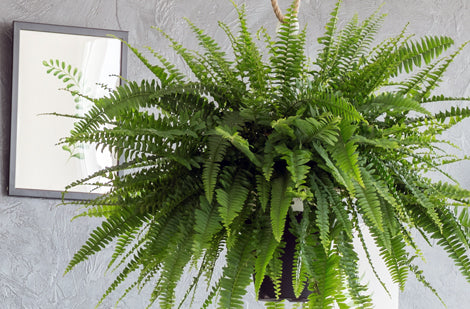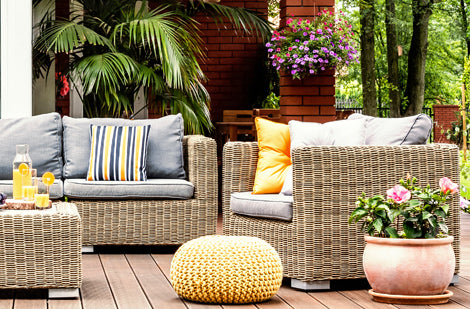Monstera deliciosa 'Thai Constellation'
'Thai Constellation' Monstera
'Thai Constellation' Monstera
Exposure
- Bright without direct sunlight
Rusticity
- Rare and prized plant
- Large leaves
- Climbing
- Easy care
- Toxic
The Monstera 'Thai Constellation' is a highly sought-after variety of Monstera deliciosa, renowned for its unique and spectacular variegated foliage. Its large, heart-shaped leaves are adorned with random creamy white patterns, reminiscent of a starry sky, hence its evocative name. This tropical plant will bring a touch of exoticism and elegance to your home.
Main Features
- Flowering: Indoors, flowering is rare. If it occurs, it produces a white, spathe-shaped flower, followed by an edible fruit when ripe.
- Foliage: The leaves of young plants will not be perforated. Perforations appear over time. The leaves are large, leathery, dark green, and deeply lobed. Their main characteristic is the creamy white variegation, which varies in intensity and distribution from one leaf to another, making each plant unique.
- Habit: The Monstera 'Thai Constellation' has a climbing habit. Its long stems naturally cling thanks to its aerial roots. It likes to cling to a trellis or any other support and can reach up to 3 m in height. The use of a moss pole allows the plant to seek all the light it needs and produce larger leaves.
- Growth: Growth is moderate to slow, especially compared to the classic Monstera deliciosa. It can reach an imposing size over time, up to 2-3 meters indoors if it is staked.
- Maintenance: This plant is relatively easy to care for but requires special attention to preserve its beautiful variegation. You can remove the roots that do not serve as support.
Growing Information
- Light: It prefers bright, indirect light. Avoid direct sunlight, which can burn the leaves and reduce variegation.
- Soil Type: A well-draining potting mix rich in organic matter is ideal.
- Watering: Water when the top of the soil is dry to the touch. Avoid overwatering, which can cause root rot.
- Fertilization: Fertilize during the growing season (spring and summer) with a diluted balanced fertilizer.
- Temperature and Humidity: The Monstera 'Thai Constellation' enjoys warm temperatures and high humidity. Maintain high ambient humidity so that the stems attach themselves to the moss pole; otherwise, you will need to use ties. Mist the foliage regularly to increase ambient humidity.
- Repotting: Repot every 2-3 years in the spring, in a slightly larger pot, to encourage growth.
Plant details
Dimensions
Dimensions
Characteristics
Characteristics
Habit:
- Climbing
- Flared
Flowering colours:
- White
Plant needs
Plant needs
Watering:
- When the top 2 inches are dry
Maintenance:
- Easy
Soil requirement:
- Well drained
- Soil for tropical plants
- Soil for cacti and succulents
Features
Features
Resistance:
Attract:
Use:
- Pot
- Hanging
- Trellis
- Arrangement
Attribute:
- Magnificent foliage
Related articles
-

Potting House Plants: which pot to choose
Read the articleBien qu'une plante puisse passer plusieurs mois et parfois même plusieurs années dans le même pot, avec le temps ses racines envahissent tout l'espace disponible. Il devient important de choisir...
-

African violets
Read the articleMembre de la famille des gesnériacées, la violette africaine offre une floraison abondante et continue à qui sait respecter ses besoins culturaux. Ses fleurs, aux formes diverses et aux couleurs...
-

The Complete Guide to Buying and Caring for Ind...
Read the articleBringing a touch of nature to your home with plants is a great idea! Not only do they beautify your living space, but they also help purify the air. However,...
-

Make your own terrarium
Read the articleVous avez envie d’ajouter un peu de verdure à votre intérieur, mais n’avez jamais eu le pouce vert? Facile à réaliser, peu coûteux et nécessitant un entretien minime, le terrarium...
-

Create a garden with succulents
Read the articleLes plantes grasses n’ont pas leur pareil pour créer des arrangements à la fois impressionnants par leurs couleurs, leurs formes et leurs textures et faciles à entretenir. Qu’on les agence...
-

Houseplants to discover - Butterfly Palm or Are...
Read the articleDypsis lutescens, anciennement Chrysalidocarpus lutescens
-

-

-

Houseplants to discover - Madagascar Dragon Tree
Read the articleDracéna de Madagascar ou Dracaena marginata
-

-

Houseplants to discover - Ferns
Read the articleDivers noms botaniques, dont Nephrolepis exalata (fougère de Boston), Davallia fejeensis (fougère patte de lapin), Asplenium nidus (fougère nid d’oiseau), Platycerium bifurcatum (fougère corne d’élan) et beaucoup d’autres.
-

-

-

Snake Plant: The Unkillable Houseplant, Perfect...
Read the articleThe Snake Plant is an ideal houseplant for everyone, whether you're a beginner or an experienced gardener. Its resilience, ease of maintenance, and decorative appearance make it an essential choice...
-

Edible Flowers: Top 5 for Garden and Kitchen
Read the articleOffrant une belle gamme de couleurs, de formes et de textures, les fleurs comestibles enthousiasment les amoureux de jardinage et de cuisine.
-

Tropical Flowering Plants: A touch of the exoti...
Read the articleLes plantes tropicales à fleurs ont tout pour faire tourner les têtes! Colorées, odorantes, généreuses, elles n’ont pas leur pareil pour égayer une aide de repos, un balcon, une terrasse....
-

Keep a palm tree on the terrace - why not!
Read the articleDifficile de résister à l’appel des tropiques quand le soleil et les températures clémentes se pointent le bout du nez. Rien de mieux qu’un palmier sur la terrasse ou le...
-

Bringing Outdoor Plants Indoors for the Fall
Read the articleThe arrival of autumn, with its cool nights, announces the time to bring some plants inside to protect them from frost. However, don't rush. Let's enjoy the last beautiful sunny...
-

When and how to repot house plants
Read the articleAlthough a plant can spend several months and sometimes even several years in the same pot, over time its roots invade all the available space.
-

How to select the best houseplant potting soil
Read the articleIl est important d'adapter le substrat utilisé au type de plante. Plusieurs mélanges sont possibles à partir de terre brune, de mousse de tourbe, de perlite ou de vermiculite. Pour...

























